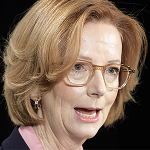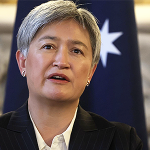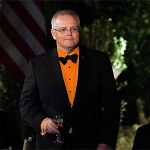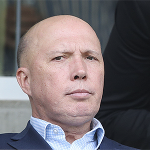The left-of-centre (make that left-of-the-Canadian-centre, which is mightily left-wing) Liberal Party has won Monday’s federal election in Canada. Mark Carney, who was substituted in to replace Justin Trudeau, brought the Liberals back from 20 points down in the polls. As of writing, Carney and the Liberals look likely to win 168 or 169 seats. That’s short of the needed 172 for a majority. The Poilievre Tories have won 145 or so seats. They won’t ever vote to keep the Liberals in office. The Greens may get one seat, no more. So they won’t be able to help Carney win confidence votes. There are only two options. One is the French separatist party, the Bloc Quebecois. They ended up losing seats this election but still will have 22 or so. That gives them the balance of power unless Carney and the Libs try to rely on the NDP party. But this ‘even further left than the Liberals’ party was decimated. They are down to six, maybe seven seats. They performed so woefully they have lost party status in the Parliament. And their leader, Jagmeet Singh, not only lost his own seat he came third. This was the man that for almost a year held the fate of Justin Trudeau and the Liberal Party in his hand. He could have brought down the Trudeau minority government last October, say, when the NDP were basically level-pegging with the Liberals. But he chose not to do so.
In my view a lot of wrong-headed bumpf is being written about the Canadian election. So here are some background facts:
Poilievre and the Conservative party scored about 41.5 per cent of the popular vote. Canada is a very, very left-wing country – the median Canadian voter being way to the left of Australia’s median voter and to the left even of California’s, meaning Donald Trump has no serious desire to make 38 million ‘left-of-California’ voters part of the US. My point here is that Poilievre’s 41.5 per cent of the vote is the best result for the Tories since 1988. The right-of-centre vote did not collapse. It gained.
The further left NDP party saw its share of the vote collapse from more or less 15 per cent to 6 per cent. Virtually all those votes went to Carney and the Liberals. As well, the Green Party did really poorly, in part because it opted not to run candidates in many constituencies. The truth of Canada’s election is that the left-wing vote coalesced around Carney. To have any chance of winning the Conservatives – remember that Canada has 1st-Past-the-Post voting – need the progressive vote to splinter between the Libs, the NDP and the Greens. Then their candidate can get the most votes in the seat. When Stephen Harper won a big Conservative majority in 2011 he got about 39.5 percent of the vote. The Liberals and NDP split the progressive vote and Harper romped home. This past Monday Poilievre and the Conservatives won two full points more of the popular vote than Harper in 2011, indeed Poilievre pulled in the best showing in the popular vote in almost four decades, and he lost badly.
Canada has a massive voting split along geographical lines. The provinces (their name for our States) of Alberta and Saskatchewan had been virtually ‘no-win’ areas for Trudeau and the Liberals. That didn’t change on Monday. The entire province of Saskatchewan had, for the prior two elections, elected conservatives in every single constituency. On Monday Carney and the Libs won one seat there. In Alberta it was much the same story. These two provinces hold huge pools of conservative voters. That makes the Tory vote too concentrated and not spread out enough. It also has given rise to some large feelings of disaffection there after four terms of left-wing Liberal governments. Last year well under 10 per cent of Albertans told pollsters they would vote to leave Canada. That figure is now up into the mid-30s in some polls. The prairie provinces of the West, especially oil and gas producing Alberta, feels it has been shafted by what Canadians call ‘the Laurentian elites’ – meaning the voters of Ontario and Quebec. It is there that the Net Zero religion has a real hold and it is then imposed on Alberta and the prairie provinces. Mark Carney is going to find this simmering dislike of the east very hard to deal with. Some of the mentors of Stephen Harper such as Preston Manning have already said that they think there is a real chance that Alberta could vote to leave Canada. We’ll see. Certainly it is not good to have whole provinces vote almost entirely one way for election after election and lose repeatedly.
That brings us to Trump’s effect on the Canadian election. From what I’ve said already it is obviously false to think that Trump’s tariffs and taunting drove conservative voters to the left. Again, Poilievre scored the highest popular vote tally of any Conservative going back almost forty years. What happened, as I said, is that the left-of-centre vote coalesced around the Davos Man, ex-central banker, investment banker millionaire Mark Carney. In part a bit of that would have happened as soon as Justin Trudeau stepped down because he was loathed by many (and because a lot of Canadians didn’t link Carney to Trudeau even though the former was an unofficial advisor of the latter). The rest of the left-wing coalescing was driven by Trump.
So here we have to step back and seriously question the right-of-centre pearl clutchers in the media, on Sky, across the anglosphere, who blame Trump for Poilievre’s loss. Trump’s taunting of Canada and his global tariff policies have unified the left in their hatred of the Orange Man. But for the life of me I can’t see why an American President should care about that. He certainly wasn’t elected President of the US to help Canada’s or Australia’s right-of-centre leaders. Moreover, Trump had strong grounds for a personal dislike of Justin Trudeau. As with a good few left-wing politicians here Trudeau and some in his Cabinet had called Trump a racist, a white nationalist, deranged. All are patently false. But the TDS sufferers on the conservative side of politics seem to think that Trump should be running the US to help fellow conservative parties around the anglosphere. Why? Poilievre made a tactical error in dealing with Trump. He should have come out hard and argued to Canadians that he and the Conservatives would do far better negotiating with Trump than the party that was calling Trump a racist and had been attacking him personally for years. Ad after ad detailing what Trudeau and his team had been saying about Trump and how he, Poilievre, would lower the temperature. Instead, Poilievre tried to ignore the problem while forming a sort of unity ticket against the US and Trump. This played right into Carney’s hand. Incumbents generally do better in such situations. And given the total lack of shame or embarrassment the Liberal Party that had for years argued that multiculturalism meant that Canadian flags and national pride were oh so icky, all of a sudden went all in on both. It worked. Or rather it worked in cleaving the country into two voting blocks, one on the left but also a four-decade-high conservative voting one on the right. The problem for Poilievre (who looks likely to lose his seat because it was on the outskirts of the national capital Ottawa, the most lefty part of the country) boiled down to the fact that Canada is simply a very left-wing place. Toronto in Ontario is much bigger than Sydney and it voted for Carney. Montreal is nearly the size of Sydney and it saw the Libs do very well indeed. And that was the election right there. As it always is in Canada. Which is the point all of the disaffected Albertans are making.
Let me conclude with a few observations. If the final tally leaves Carney and the Liberals in minority government territory I don’t think this Carney minority government will last anywhere near a full five-year terms. The NDP will have learned its lesson about the perils of unconditional support. And the Quebec Bloc party will do whatever helps their Quebec separatist agenda. Relatedly, this is not a strong position from which to bargain with Trump and the US. Left-of-centre Canadians may have flocked to Carney to stand up to Trump. But Carney heads up a minority government, of the left. Carney insulted Trump repeatedly during the election campaign to help his chances and will now try to downplay all that as he attempts to negotiate with the US President on tariffs, the border and Canada’s truly pathetic level of defence spending (that manages to make Australia look good). The simple truth is that the US holds all the bargaining chips. Trudeau blocked all attempts to build oil and gas pipelines to the sea. The only place Canada can send its biggest export, oil and gas, is straight south to the US. Three-quarters of Canada’s exports go to the US but only 15 per cent of the US’s to Canada. Moreover, only a bit over a tenth of the US economy is on the export side. It’s well over 30 per cent for the EU and Canada’s is higher again. Plus Canada runs a very big surplus (think oil and gas sales) with the US. Trade wars are not won by the country with the surplus.
All in all, then, for this Canadian-born writer it was yet another election win for the lefty Liberal party that has dominated Canadian politics for the last 120 years, being in office for over two-thirds of that time. Canadian voters like to vote left. They did so again on Monday, despite the last decade of Liberal Party rule delivering a massive drop in living standards that resulted in such a precipitous decline that the richest Canadian province is today poorer, per capita, than the poorest US state. Canada’s Liberals did that, not Donald Trump. So if Canada’s voters are so stupid that none of that economic carnage matters one whit to them as long as they can vote for an ex-central banker who is calling Trump names, whose fault is this election result? Was it really Trump’s fault? Or that of the voters whose TDS feelings overcame rational thought? Or, maybe, Poilievre should have gone all in pointing out the fakery of Carney and the Libs wrapping themselves in a flag they used to despise and how he would be miles better placed to negotiate? Readers can decide for themselves. My view is that the softly-softly, let’s play the Left’s game approach is for losers. Always.









